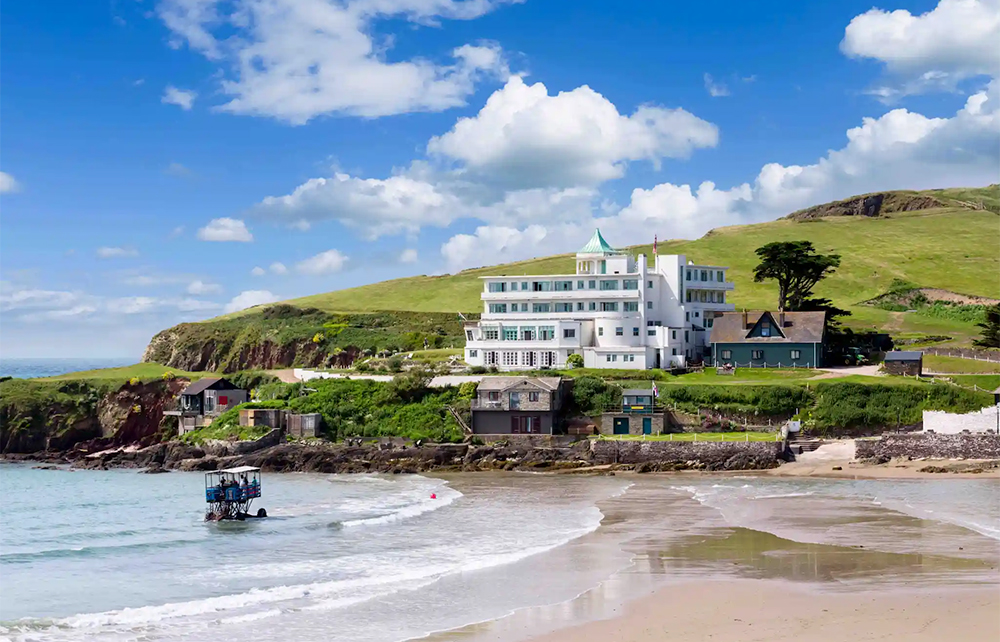The Pilchard Inn sits at the entrance to Burgh Island, a minute tidal island off the coast of south Devon. The island is home to the Burgh Island Hotel, an eerie Art Deco masterpiece built by the son of a screw mogul, which dominates the view from Bigbury-on-Sea like Coney Island: it is more apparition than hotel.
The hotel is faded, fascinating, plated in Art Deco and decorated with vast screws. I wonder if this is a joke: there is little information about the early years of the house, which vibrates with depravity and things unsaid. To compound the mystery, Agatha Christie wrote here in a shack by the sea, eating cream from a tub as she murdered people in her head, and wrote it down for money. The hotel inspired And Then There Were None and Evil under the Sun.
There are cliffs designed for domestic murder, and Pixy Cove, where Arlena Stuart was strangled, views of the comforting hills of Devon and a helipad for the tumbleweed of café society who used to come here.
If it wasn’t on the coast, and the staff weren’t kind, it could be Wuthering Heights
The hotel is on sale for £15 million, and this includes the ghosts, and the inn. The Pilchard dates its foundation to 1336 and has written it on an exterior wall so yachtsmen can see it as they sail past. It may have been a hostel for the pilgrims who came to the monastery whose bones are buried under the hotel: where else? After the Dissolution, pilchard fishermen lived on Burgh Island, and the chapel at the top became their lookout for fish: more bloody murder.
Christie is the bestselling novelist in history – if you think the Bible is true. (If you don’t, she’s the second bestselling, which isn’t bad.) It’s mad to think British people are dull.







Comments
Join the debate for just £1 a month
Be part of the conversation with other Spectator readers by getting your first three months for £3.
UNLOCK ACCESS Just £1 a monthAlready a subscriber? Log in